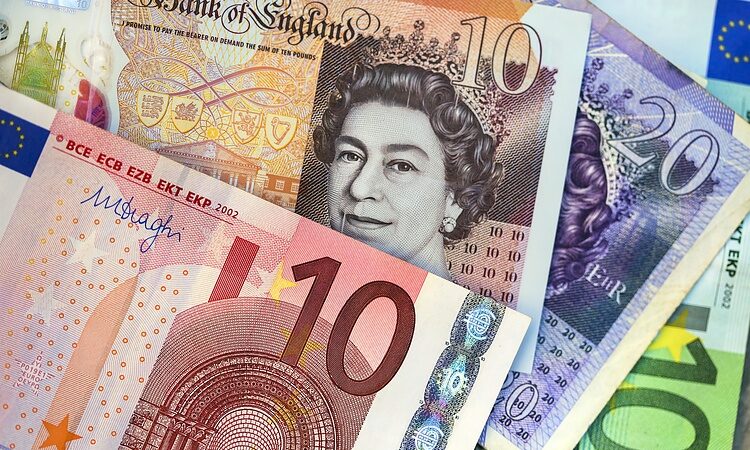
- EUR/GBP falls from a 5-month high of 0.8754, currently trading at 0.8705.
- Eurozone inflation drops to 2.9% in October, while GDP for Q3 misses forecasts, contracting by 0.1%.
- The Bank of England is expected to keep rates unchanged at 5.25% on November 2, as traders priced in rate cuts towards the end of 2024.
The EUR/GBP falls from a 5-month high reached earlier in the European session, at 0.8754, but has retreated after the Eurozone’s (EU) economy contracted while inflation cooled. Therefore, speculations are mounting that the European Central Bank (ECB) might finish raising rates. The cross exchanges hands at 0.8705.
Euro loses ground against the British Pound as economic data fuels speculation that the ECB might halt its rate hikes
During the European session, the EU revealed that inflation dipped below the 3% threshold in October, according to Eurostat, with prices rising to 2.9%, below the 3.1% expected and well beneath the September 4.3% jump. Given that data justifies the ECB’s pausing rates last week, money market futures estimate the first rate cut is expected in the first half of 2024.
Nevertheless, not everything is good news for the bloc, as the Gross Domestic Product (GDP) for Q3 missed forecasts of 0%, at -0.1%. despite that, some ECB officials continued to keep the door open for additional tightening, as Joachim Nagel from the Bundesbank noted, “Our tight monetary policy is working, but we must not let up too soon.” He stated that rates need to be at a sufficiently high level for a long time.
On the UK front, the Bank of England is expected to keep rates unchanged at a 15-year high of 5.25% on November 2. Although there are signs the economy is stagnating, inflation remains three times the BoE’s target of 2%. Money markets traders are betting the BoE is done raising rate increases, with rate cuts expected towards the end of 2024.
EUR/GBP Price Analysis: Technical outlook
From a daily chart perspective, the uptrend remains intact despite dipping toward the 0.8700 figure. However, if EUR/GBP sellers drive prices below the 200-day moving average (DMA) at 0.8691, that could pave the way towards a more significant correction, with first support seen at the October 24 low of 0.8682, followed by the August 11 high of 0.8669. On the other hand, if the pair stays above 0.8700, a re-test of 0.8754 is on the cards, followed by the 0.88 handle. Up next would be the May 3 high at 0.8834.






